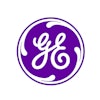Creating virtual endoscopy images from multislice CT data is an effective but time-consuming way to examine the abdomen and the colon, according to German researchers reviewing the pros and cons of this technique.
Researchers from the University of Ulm made multiple presentations on the topic at the American Roentgen Ray Society meeting in May. In the first paper, multislice CT virtual colonoscopy was compared to conventional CT contrast enema imaging for diagnosing patients with acute abdomen pain.
In the study sample, 20 patients complaining of abdomen pain were scanned with a multislice CT after insufflation with 1500 ml of filtered air. The same group also underwent a conventional CT exam with colon enema using a water-soluble contrast agent.
The multislice CT images were able to consistently identify wall thickening in the colon, particularly in areas that could not be seen with the contrast-enhanced enema, said Dr. Florian Schmid. Multislice images also provided a better view of extra-luminal complications such as sigmoid diverticulitis. Both methods were able to show inflammatory diseases of the colon and tumor stenosis equally well, he said.
"We believe that multislice CT with virtual colonoscopy is a reliable diagnostic tool for evaluating acute abdomen pain and is ready to replace conventional imaging methods. We are able to cover a large volume with thin slices for homogenous contrast and high resolution," Schmid said.
While Schmid focused on the imaging techniques themselves, a second study looked at the reconstruction capability in virtual endoscopy. Dr. Thomas Fleiter compared the resolution of multislice CT with virtual endoscopy images to a virtual double contrast CT display.
The study focused on 25 patients who underwent an abdominal scan using multislice CT and a rectal insufflation of the colon with filtered air. The images were formatted as virtual endoscopy images and also with a multiplanar reconstruction technique that emulates a double-contrast enema display, Fleiter said. The images were compared for the display of stenosis, strictures, and inflammation.
Polypoid intraluminal lesions were displayed in greater detail with virtual endoscopy than with transparent display, Fleiter reported. But virtual endoscopy did not highlight tumor stenosis or diverticulitis as well as the transparent display, he said.
However, the time needed to do the exam and reconstruct the images makes the transparent display inefficient for conducting multiple exams, Fleiter said.
"Based on the [multislice CT] technique available now, it takes up to 40 minutes to analyze one case," he said. "The whole diagnostic procedure is still slow. CT virtual endoscopy [for the transparent display] is a promising method, but standard techniques for the procedure need to be developed to make it less time consuming."
By Shalmali Pal
AuntMinnie.com staff writer
May 30, 2000
Let AuntMinnie.com know what you think about this story.
Copyright © 2000 AuntMinnie.com
















